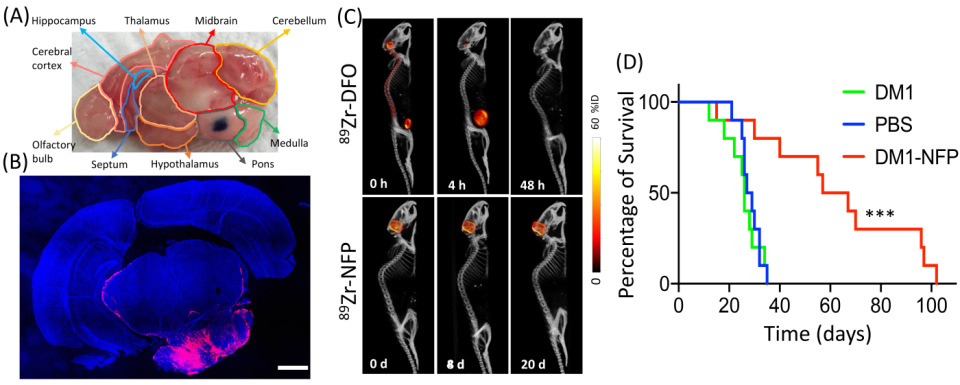Among all pediatric cancers, DIPG stands out as the most aggressive. Focal radiotherapy only extends patient survival for a few months, and chemotherapy proves ineffective as DIPG inherently resists most chemotherapeutics. Moreover, the blood-brain barrier (BBB) naturally restricts many drugs from reaching the brain tumor. Convection-enhanced delivery (CED), a direct infusion technique for delivering drugs to the brain, enables accurate dosage for more precise treatment. However, drug molecules can be quickly cleared from the brain post-delivery. The physicochemical properties of NFP can be finely tuned to control post-CED tissue distribution (Movie 3) and retention (Fig. 2). We employ a combination of CED and NFP to bypass the BBB, prolong drug retention at the fusion site, and maintain an effective therapeutic effect against DIPG, ultimately improving treatment outcomes (Fig. 3, PMID: 32301996)


